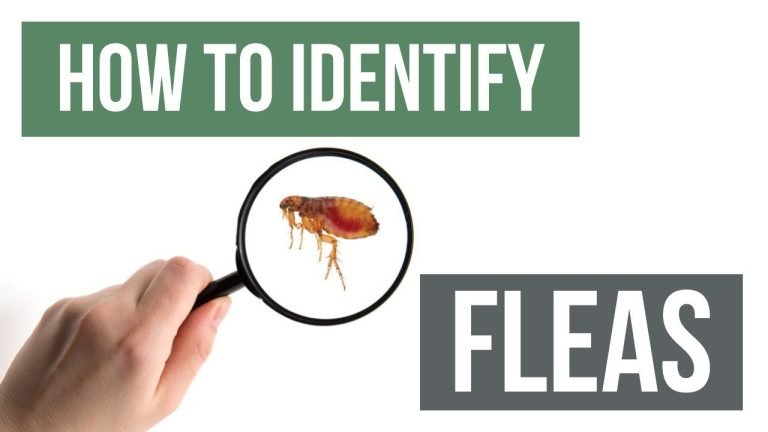Unveiling the Appearance of Fleas to the Human Eye

Have you ever wondered what a flea looks like to the human eye? These tiny pests are often too small to see clearly, but their presence can be felt with their itchy bites. In this article, we will explore the appearance of fleas and how to identify them, as well as the potential risks they pose to both humans and pets. Whether you're dealing with a flea infestation or simply curious about these minuscule creatures, read on to learn more about what a flea looks like and how to spot them.
What does a flea look like to the human eye?
A flea is a tiny, wingless insect that is typically brown or black in color. They are very small, typically only measuring about 2-3 mm in length, and have a flattened body that allows them to easily move through the fur or feathers of their host. Fleas have long, powerful legs that enable them to jump great distances, making them difficult to catch. Their body is covered in hard, armor-like plates, and they have piercing mouthparts that they use to feed on the blood of their host.
To the human eye, a flea appears as a minuscule, agile pest with a dark, compact body and long, springy legs. Their small size and quick movements make them challenging to see and capture, which can be frustrating for those trying to rid their pets or homes of these bothersome insects. The flattened shape of a flea's body allows it to easily maneuver through the hair or fur of its host, making it a formidable opponent in the battle against infestations.
How can I identify a flea on my pet or in my home?
If you suspect your pet has fleas, there are a few key signs to look for. First, check for small, dark insects moving quickly through your pet's fur. Fleas are about the size of a pinhead and are often visible to the naked eye. Additionally, you may notice your pet scratching or biting at their skin more than usual, as flea bites can cause irritation and discomfort. Lastly, inspect your pet's bedding and the areas they frequent for flea dirt, which looks like small black specks and is actually flea feces.
To identify fleas in your home, start by carefully examining areas where your pet spends a lot of time, such as their bedding, carpets, and furniture. Look for flea dirt, which is a sure sign that there are fleas in the area. You may also see adult fleas hopping around or notice small, red bites on your own skin. Keep an eye out for flea eggs, which are tiny white ovals that can be found in the pet's fur or in the environment. Vacuuming regularly and washing your pet's bedding can help control flea infestations in your home.
If you find fleas on your pet or in your home, it's important to take action quickly to prevent the infestation from worsening. In addition to treating your pet with a flea control product, you'll need to thoroughly clean and treat your home to eliminate fleas at all life stages. This may involve using a combination of vacuuming, washing bedding, and applying insecticides to targeted areas. It's also a good idea to consult with your veterinarian for advice on the best flea control methods for your specific situation.
Tiny Terrors: A Close-Up Look at Fleas
If you've ever experienced the relentless itching and scratching caused by fleas, you know just how much of a nuisance these tiny terrors can be. With their ability to infest homes and pets at a rapid pace, fleas are a force to be reckoned with. These minuscule pests may be small in size, but their impact is far from insignificant, making it crucial to take a close-up look at their habits and behavior in order to effectively combat their presence.
Uncovering the Secret World of Fleas
Uncovering the Secret World of Fleas takes you on a fascinating journey into the hidden lives of these tiny creatures. From their incredible jumping abilities to their complex life cycle, this captivating exploration reveals the surprising truths about these often misunderstood pests. Gain a new appreciation for the intricate world of fleas and learn how to effectively manage and control their presence in your home.
Fleas Exposed: A Visual Guide for Humans
Are you constantly scratching and suspect that fleas might be the culprit? Look no further than "Fleas Exposed: A Visual Guide for Humans." This comprehensive guide provides a visual tour of these pesky parasites, helping you identify and understand their behavior. With clear, concise explanations and high-quality images, you'll become an expert in flea detection and prevention in no time.
Say goodbye to the frustration of dealing with fleas and take control of your living space. "Fleas Exposed: A Visual Guide for Humans" is your go-to resource for understanding and combating these tiny troublemakers. Whether you're a pet owner or simply want to protect your home, this visual guide will equip you with the knowledge and tools you need to keep fleas at bay. Don't let these minuscule menaces disrupt your peace of mind – arm yourself with the information in this guide and reclaim your space from fleas.
In summary, fleas are small, wingless insects that are brown in color and have a flattened body, making them difficult to spot. They are equipped with powerful hind legs for jumping and are often mistaken for tiny specks of dirt. Despite their size, their presence can cause significant discomfort for both pets and their owners. Understanding what fleas look like and being proactive in preventing and treating infestations is essential for maintaining a healthy environment for all.
